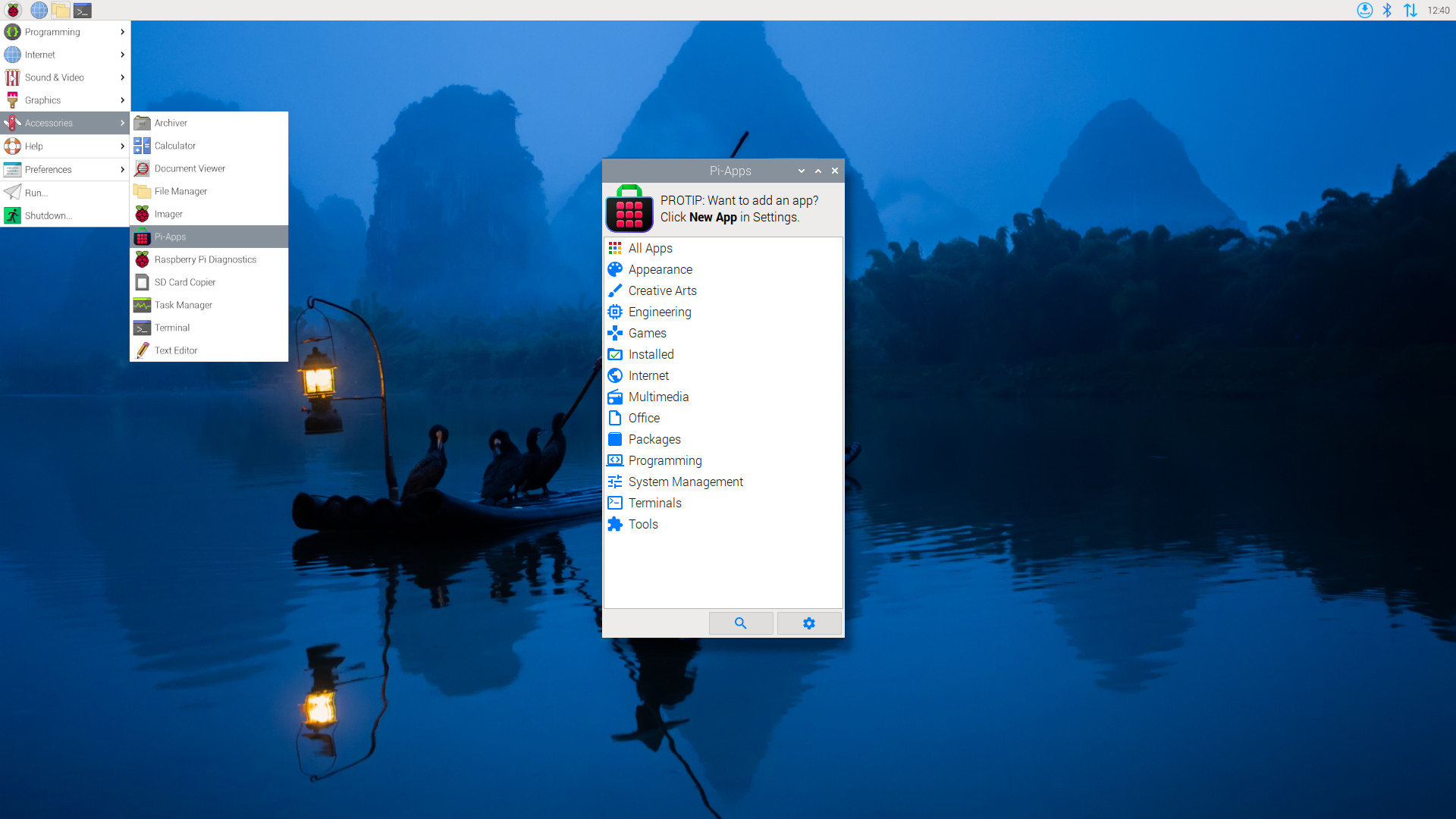How To Manage A Fleet Of Raspberry Pi Downloads Like A Pro
Managing a fleet of Raspberry Pi downloads might sound intimidating, but it’s not as complicated as it seems. If you’re diving into the world of IoT or setting up a network of Raspberry Pi devices, knowing how to handle multiple downloads efficiently is key. Whether you’re an enthusiast, a tech-savvy hobbyist, or a professional developer, this guide will walk you through everything you need to know about managing a fleet of Raspberry Pi downloads.
Imagine having multiple Raspberry Pi devices scattered across your home, office, or even different locations. You’ll need a system to manage software updates, firmware downloads, and configurations. But where do you start? This article has got your back. We’ll break down the process step by step so you can manage your Raspberry Pi fleet like a pro.
In today’s tech-driven world, Raspberry Pi has become a staple for DIY projects, smart home setups, and enterprise-level solutions. With its affordability and versatility, it’s no wonder why so many people are jumping on board. But as your fleet grows, so does the complexity of managing it. Let’s dive in and make sure you’re equipped with all the tools and knowledge you need.
- 10 Trendy Hairstyles For Female You Need To Try In 2024
- Movierulz Puspa The Ultimate Guide To Streaming And Downloading Movies
Why Managing a Fleet of Raspberry Pi Downloads Matters
When you’re dealing with multiple Raspberry Pi devices, managing downloads becomes crucial for maintaining consistency and efficiency. Without a proper system in place, you risk running outdated software, mismatched configurations, or even security vulnerabilities. Here’s why managing a fleet of Raspberry Pi downloads should be at the top of your priority list:
- Ensures all devices are running the latest software versions
- Reduces the risk of security breaches
- Streamlines updates across all devices
- Saves time and effort in the long run
Think about it like this: if you’re running a smart home setup with 10 Raspberry Pi devices controlling different systems, you don’t want one device to lag behind while the others are updated. Consistency is key, and managing downloads effectively will help you achieve that.
Tools You Need to Manage Raspberry Pi Downloads
Before we dive into the nitty-gritty of managing your fleet, let’s talk about the tools you’ll need. Having the right tools makes the entire process smoother and more efficient. Here are some must-haves:
- Why Movierulz Rangasthalam Telugu 2018 Is Still A Big Deal In The Streaming World
- Wash And Wear Hair Styles The Ultimate Guide To Effortless Beauty
- Raspberry Pi Imager: A simple yet powerful tool for writing images to SD cards
- Etcher: Another reliable option for flashing SD cards with OS images
- Fleet management software: Tools like Balena or Resin.io can help you manage multiple devices
- SSH access: For remote management and troubleshooting
These tools are designed to make your life easier when managing a fleet of Raspberry Pi devices. Whether you’re installing new software or updating existing ones, having the right tools in your arsenal will save you time and headaches.
Step-by-Step Guide to Managing Your Fleet
Now that you have the tools, let’s walk through the process of managing your Raspberry Pi downloads step by step. This guide will cover everything from initial setup to ongoing maintenance.
1. Set Up Your Devices
Before you can manage downloads, you need to set up your Raspberry Pi devices. This includes:
- Flashing the OS image onto SD cards
- Configuring basic settings like Wi-Fi and SSH
- Assigning unique hostnames to each device
Setting up your devices properly from the start will make managing downloads much easier down the line.
2. Choose a Fleet Management Solution
There are several options available for managing a fleet of Raspberry Pi devices. Some popular choices include:
- Balena: A cloud-based platform for managing IoT devices
- Resin.io: Another cloud-based solution with similar features
- Fleet Commander: A local management tool for smaller setups
Choose the solution that best fits your needs and budget. If you’re managing a large fleet, a cloud-based solution might be more practical. For smaller setups, a local tool could suffice.
3. Automate Downloads and Updates
One of the biggest time-savers when managing a fleet of Raspberry Pi devices is automation. By automating downloads and updates, you can ensure all devices stay up to date without manual intervention. Here’s how:
- Set up cron jobs for regular updates
- Use tools like Ansible or Puppet for configuration management
- Enable automatic firmware updates
Automation not only saves time but also reduces the risk of human error. Plus, it ensures all devices are running the latest versions of software and firmware.
Common Challenges and How to Overcome Them
Managing a fleet of Raspberry Pi devices isn’t without its challenges. Here are some common issues you might encounter and how to tackle them:
1. Network Connectivity Issues
When managing multiple devices, network connectivity can sometimes be a problem. To overcome this:
- Use a stable Wi-Fi connection or Ethernet
- Set up a local network for your devices
- Monitor network performance regularly
2. Storage Limitations
As you download more software and updates, storage space can become an issue. Here’s how to handle it:
- Use larger SD cards or external storage
- Regularly clean up unnecessary files
- Optimize storage usage with tools like Disk Usage Analyzer
3. Security Concerns
With multiple devices connected to the internet, security is a top priority. Protect your fleet by:
- Using strong passwords and enabling two-factor authentication
- Regularly updating software and firmware
- Implementing firewalls and intrusion detection systems
Best Practices for Managing Raspberry Pi Downloads
To ensure smooth and efficient management of your Raspberry Pi fleet, follow these best practices:
- Document everything: Keep detailed records of your devices, configurations, and updates
- Test before deploying: Always test updates on a single device before rolling them out to the entire fleet
- Monitor performance: Regularly check the performance of your devices to catch issues early
By following these best practices, you’ll be able to manage your fleet with confidence and avoid common pitfalls.
Data and Statistics to Support Your Fleet Management
According to a recent study, the global IoT market is expected to reach $1.1 trillion by 2026. With more and more devices being connected to the internet, the demand for efficient fleet management solutions is growing rapidly. In fact, a survey conducted by Balena found that 70% of IoT developers use some form of fleet management software to manage their devices.
These numbers highlight the importance of having a solid fleet management strategy in place. As the number of connected devices continues to grow, so does the need for tools and techniques to manage them effectively.
Expert Tips for Advanced Users
If you’re an advanced user looking to take your Raspberry Pi fleet management to the next level, here are some expert tips:
- Explore containerization with Docker for better resource management
- Set up a private cloud for secure and scalable storage
- Experiment with edge computing for faster data processing
These advanced techniques can help you optimize your fleet’s performance and unlock new possibilities for your projects.
Conclusion: Take Action Today
Managing a fleet of Raspberry Pi downloads doesn’t have to be overwhelming. With the right tools, strategies, and best practices, you can handle multiple devices with ease. Remember to:
- Set up your devices properly from the start
- Choose the right fleet management solution for your needs
- Automate downloads and updates to save time
Don’t wait any longer to take control of your Raspberry Pi fleet. Start implementing these tips today and see the difference it makes. And don’t forget to share your experience in the comments below or check out our other articles for more tech insights!
Table of Contents
- Why Managing a Fleet of Raspberry Pi Downloads Matters
- Tools You Need to Manage Raspberry Pi Downloads
- Step-by-Step Guide to Managing Your Fleet
- Common Challenges and How to Overcome Them
- Best Practices for Managing Raspberry Pi Downloads
- Data and Statistics to Support Your Fleet Management
- Expert Tips for Advanced Users
- Conclusion: Take Action Today
- Hairstyles Cuts The Ultimate Guide To Finding Your Perfect Look
- Stylish Haircut For Women Unlock Your Style And Confidence

How to manage applications on your Raspberry Pi with PiApps Tom's

Raspberry Pi Fleet Management with Qbee

How to Manage Users in Raspberry Pi? ElectronicsHacks